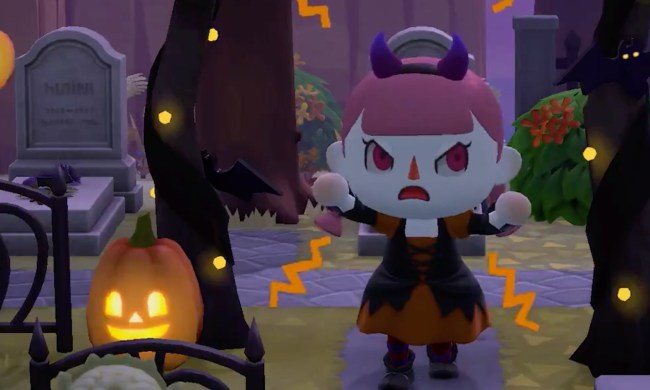A huge 2.0 update for Animal Crossing: New Horizons is bringing a ton of new content, including returning characters, quality-of-life changes, new activities, and more. A video shown today during the September Nintendo Direct revealed that the update will be available for free on November 5.
In addition to the previously teased Brewster and the Roost café, fan-favorite characters like Katrina, Kapp’n, and Tortimer will be making a return in an all-new area, and players will have more options in how they decorate their houses and islands.

At the Roost, players will be able to enjoy a cup of coffee with Brewster, Animal Crossing‘s very own brewmaster. Players will also be able to scan Amiibo cards to invite NPC residents to visit the café with them, as well as invite other players to enjoy coffee together. Another returning character is Kapp’n, who will sing his usual sea shanties as he ferries players across the ocean to new “mysterious island,” which features different materials, plants, seasons, and times of day than the main island.
Most of the other returning characters will be arriving via Harv’s island, which has a new area in the back. After the player contributes enough bells to various properties on the island, characters like the hairdresser Harriet, the fortune-teller Katrina, the shoe seller Kicks, and wallpaper salesman Sahara will set up permanent shop, allowing players to use their services. Players can get their furniture customized by Reese and Cyrus, the owners of Re-Tail in Animal Crossing: New Leaf, or speak with Tortimer, the former Animal Crossing town mayor.

Gyroids, furniture items from previous Animal Crossing games, are also making a comeback. They now must be watered in order to “grow” into a full-sized Gyroid, which can then be placed in a house to create a sound effect.
The 2.0 update also aims to answer some of players’ quality-of-life complaints. Town ordinances, which allow players to adjust the activity times of their island, are making a comeback from New Leaf. Players will be able to craft up to 10 each of bridges and inclines on their island, which has been increased from eight each. The Nook Phone’s camera app is also being upgraded to the Pro Camera, which allows players to take pictures from a first-person perspective and add themselves in the photo via a tripod mode.
For ease of storage, players can use the new locker furniture item to access their home storage from anywhere on the island. A new tool, the ladder set-up kit, will allow players to permanently place ladders on cliffs, allowing for ease of access in areas that are too small for inclines.

There’s more home customization available than ever in the new update. Players can now increase the size of their storage to 5,000 items, and there are new exterior styles for houses. There are also new furniture items that can be bought with Nook Miles and tweaks to custom designs. Players can also now cook food by harvesting ingredients and combining them in the usual crafting manner.
The new pro decorating license allows for furniture like hanging lamps to be placed on ceilings and walls, and players can customize single walls with a different color or style of wallpaper, creating an accent wall. The island shop will carry new items that can be placed both inside and outside. As for player customization, 11 new hairstyles will be added, which Harriet can teach players once she moves in to Harv’s island.
Players will also have some new activities available to them. A new group stretching task allows players to use the Switch’s motion controls to stretch with their villagers and other players. There are new emotes available for when players are living the island life with their friends, and Island Life 101, a new Nook Phone app, will give activity suggestions to new players. Island residents may invite players to visit their homes, and they may also drop by players’ houses, like in New Leaf.
The Animal Crossing: New Horizons 2.0 update is free and will release on November 5 alongside the game’s new paid DLC.



